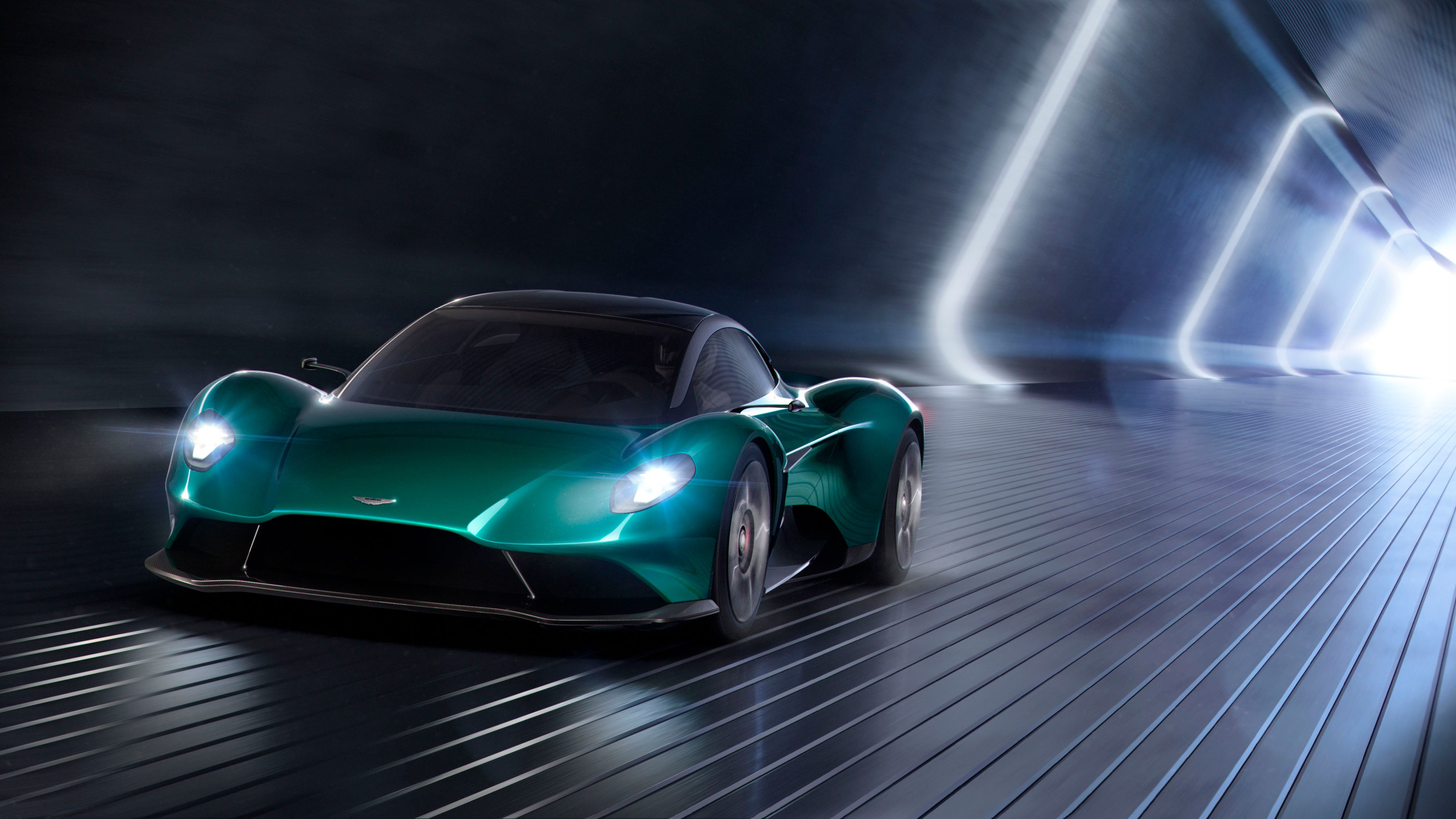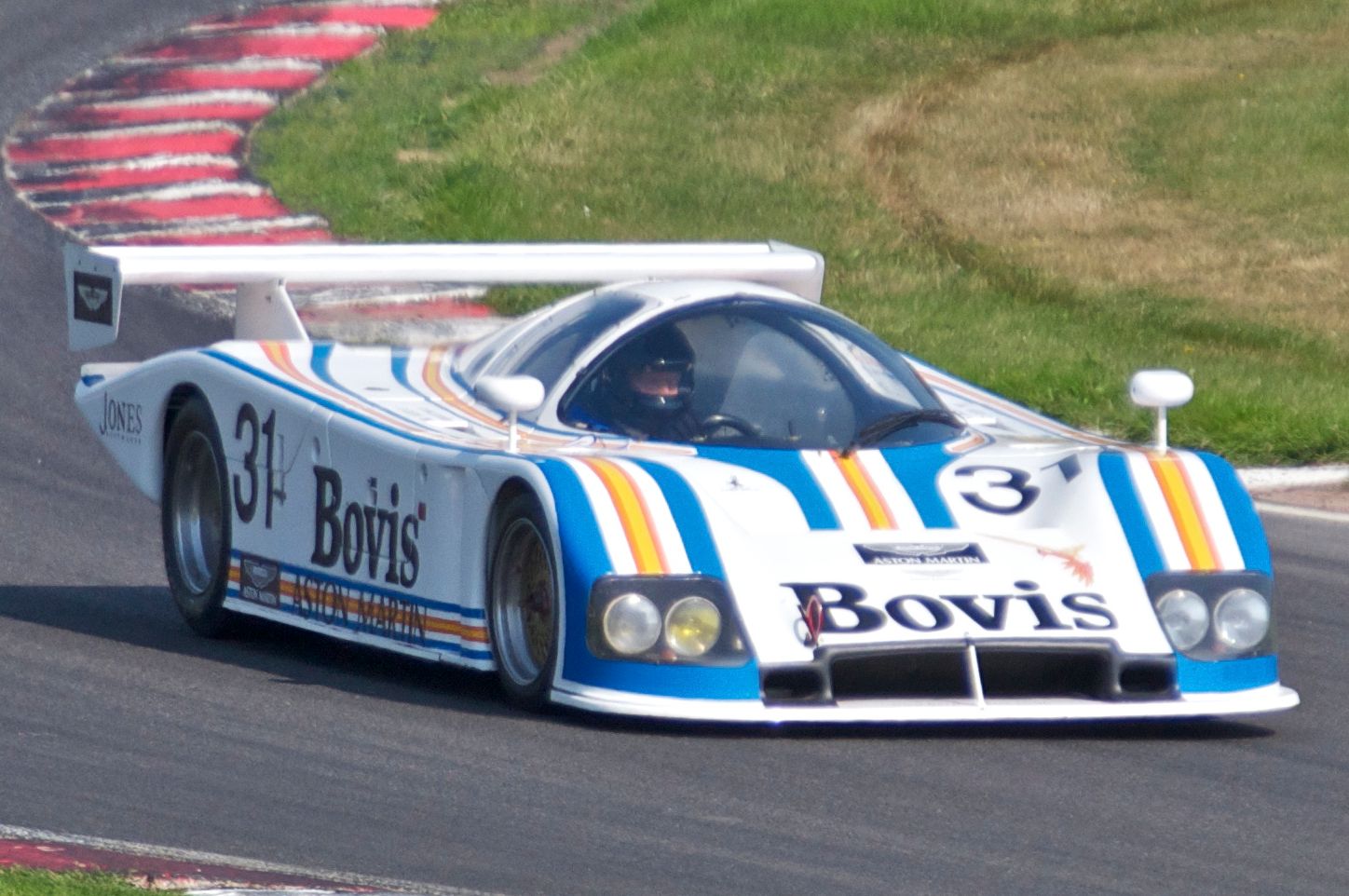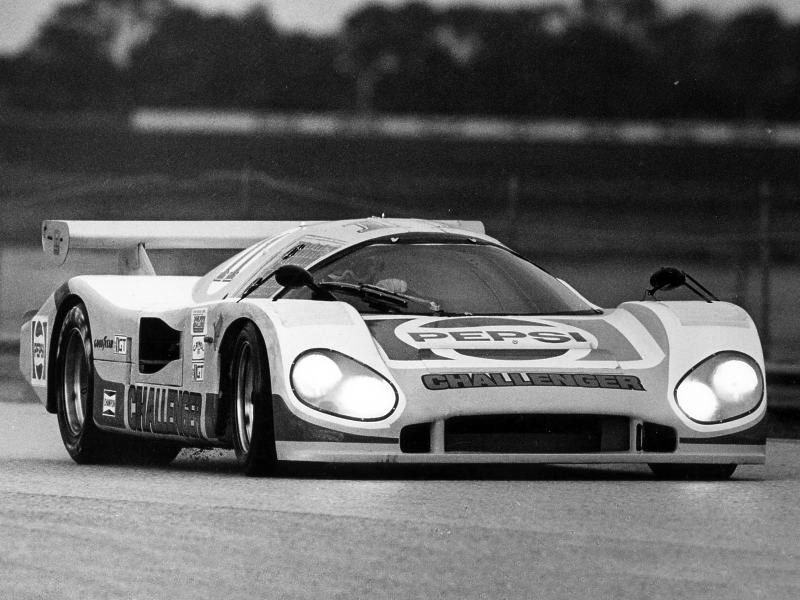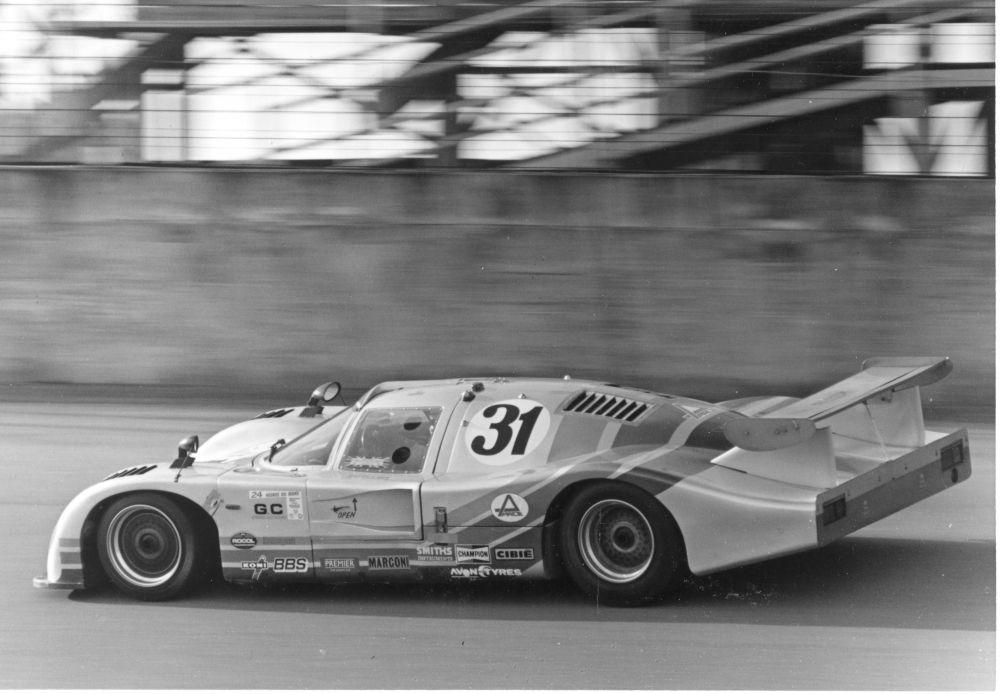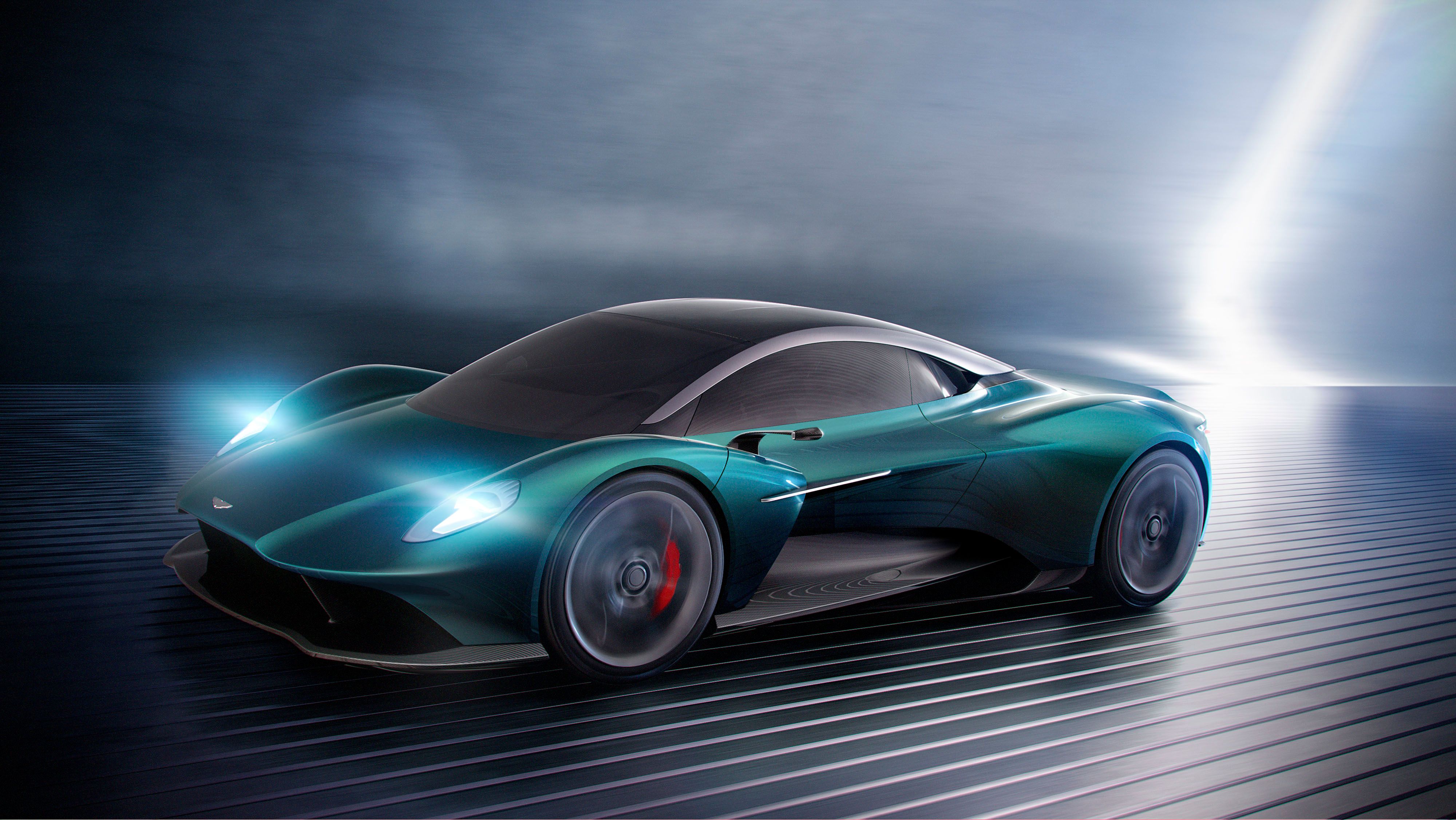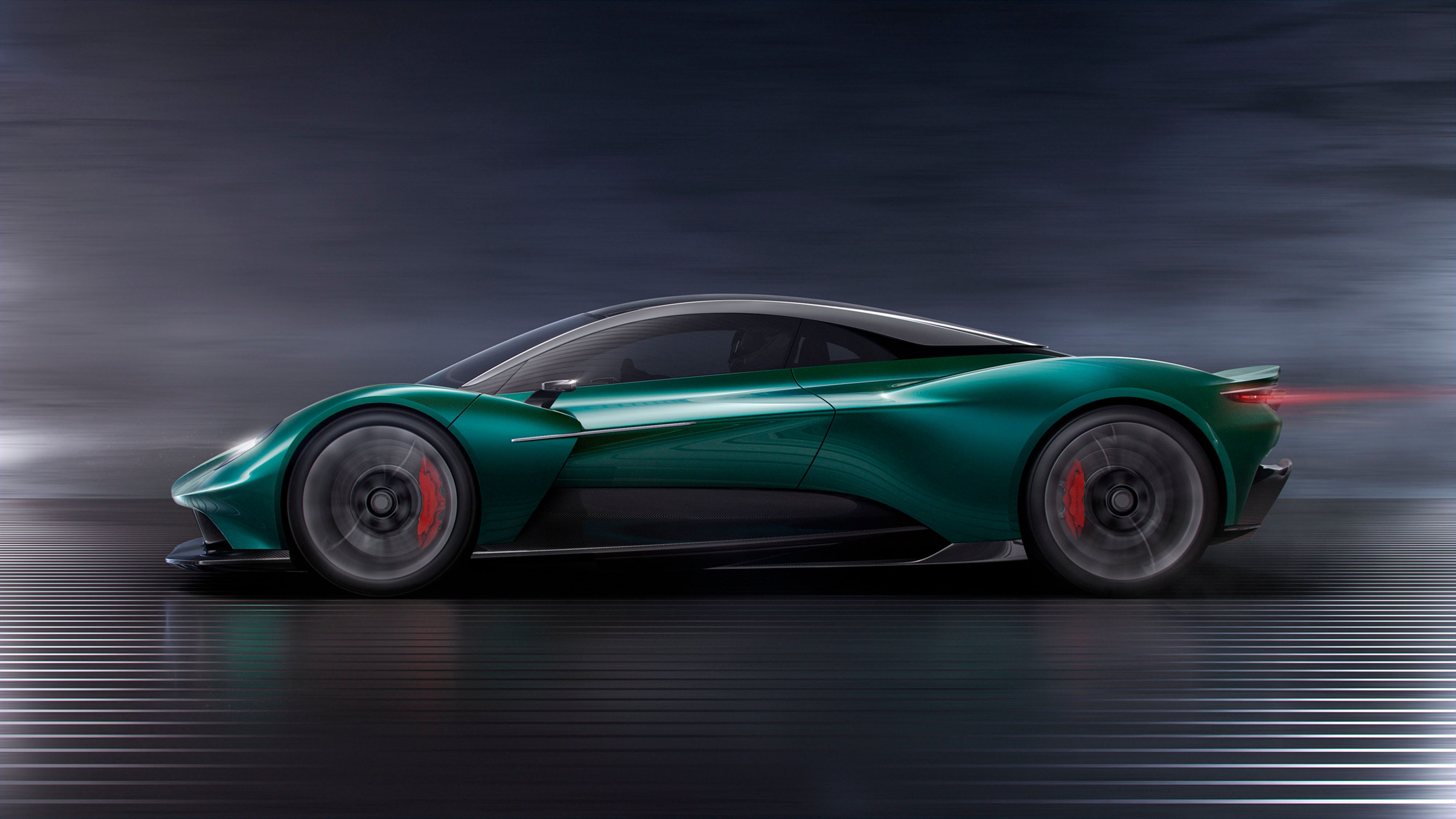Aston Martin is known as a maker of exquisite and refined grand tourers, long-legged cars that offer enough panache to satisfy Ian Fleming's James Bond on many an occasion. You could say Aston Martin knows every trick there is to know when it comes to building a front-engined GT car and that's why they're now looking to build more and more cars with the engine behind the seats. But the Valkyrie, the new Vanquish, and the AM-RB 003 aren't the first of their kind in Aston Martin's history.
When you think of any DB model from Aston Martin, you imagine an elegant two-door tourer ready for long journeys with a sumptuous and well-appointed interior and a feisty engine in front of the windshield. The company's one and only Le Mans winner, the DBR1, was also front-engined as was the futuristic brick-like Lagonda luxury sedan from the '70s. But, then, in the '80s, when Aston Martin returned to sports car racing, it did so with a mid-engined car. This effectively heralded a new breed of Aston Martins, one that has stayed away from the public highways up until now but one that's interesting to look into nonetheless.
The Spiritual Predecessor of the Valkyrie is the Bulldog
In my view, Aston Martin had the best booth at the 89th Geneva Auto Show. The British manufacturer presented the Valkyrie in an almost-production-ready specification and, on top of that, two other mid-engined supercars similar to the road-going beast developed in conjunction with Adrian Newey and the rest of the brains at Red Bull Racing. I talked in a different article about why I think the big players in the supercar realm let us down at the Geneva Auto Show and why Aston Martin was the only one who didn't disappoint with its offering, although I'm no fan of having three midship supercars that almost look alike.
Aston Martin's supercar onslaught may be surprising to many, but it should be even more surprising to find out it was on the cards before, a long while before. In fact, the first Aston Martin with the engine in front of the rear axle, the Bulldog was slated to go into limited production in 1980 but only one example was built and shown-off in 1979. Imagine how Aston Martin would've looked like today if they'd started building supercars 40 years ago. It might've already been the Ferrari and McLaren killer it now wants to become via the Vanquish and the AM-RB 003.
Mike Loasby oversaw much of the engineering side of things on the Bulldog before leaving Aston Martin for DeLorean in 1979. Keith Martin took over as Chief Engineer of the project while enjoying the support of then-Managing Director Alan Curtis who came up with the name after flying with the Scottish Aviation Bulldog plane. The design of the supercar is the work of William Towns, the same man who penned the radical-looking Lagonda. His 186-inch-long creation featured no less than five headlights hidden behind a fake grille incorporated in the nose section.
The wedge shape styling was typical of the day but what wasn't typical was the size of this beast.
The Bulldog's split-rim alloys with 'turbofans' to aid brake cooling, a very popular solution in GT endurance racing at the time, were from Compomotive and were hugged by huge Pirelli P7 tires - 345/35 at the rear. These were needed because Aston Martin said the Bulldog could do 237 mph with the boost in the turbos turned all the way up. That's 17 mph quicker than the Aston Martin One-77 and just 13 mph off the projected top speed of the Valkyrie. But where the Valkyrie has the aerodynamics and the oomph to back such a claim, the Bulldog didn't, and high-speed runs at MIRA proved just that.
A 5.3-liter, twin-turbocharged V-8 engine with Bosch fuel injection powered the Bulldog. On the test bed, with the Garret turbos on the edge of popping, the engine put out 700 horsepower but, in the car, power was down to 600 horsepower and 500 pound-feet of torque. In this trim, the mid-engined monster reached 192 mph at MIRA, and 0-to-60 mph was possible in just five seconds. That top speed is on par with the old DBS while a V8 Vantage from 1979 could go no quicker than 170 mph.
The Next Mid-Engined Aston Martins were Built to Group C Rules
Come to the end of 1981, the year Gauntlett took over Aston Martin, the first AM-powered Group C prototype was already turning demo laps during the so-called Dubai GP. That event was pushed forth by the same man who organized the more popular Birmingham Superprix later on in the '80s and featured demo runs by Williams F1 cars (who were sponsored by Fly Saudia at the time) and others, a race for historic cars won by the late and great Gerry Marshall and a celebrity race with identical Citroen CXs.
The event was a tough one to organize for Martin Hone who owned International Festival Services because, as Hone recalled later, "there was no racing circuit, an insufficient public road network to make a street circuit, no racing cars in the Emirates, few racing drivers, no trained marshals, and no officials."
But it was a great occasion for the Group C Aston Martin to debut in the hands of Porsche works driver Derek Bell. Juan Manuel Fangio, Carroll Shelby, and Dan Gurney were also there as were James Hunt and Stirling Moss who appear in a photo leaning on the silver sports car. This new car, named Nimrod NRA/C2, was the brainchild of Robin Hamilton, prolific Aston Martin racer and dealer in the Midlands.
Hamilton learned from the failed Gipfast project in the sense that he realized he needed some serious help from Aston Martin if this project was going to do something worthy to write home about. After all, the Gipfast was by-and-large a barn-built special. As such, Hamilton approached Gauntlett with "a desire to go into serious sportscar racing, unashamedly wave the flag and get Aston Martin back into something that it used to be very good at." As MotorSport Magazine writes, Aston Martin duly bought a 50% share in Hamilton's new company, Nimrod, and ordered engine tuner Tickford to take care of the 5.3-liter V-8s.
However, nothing was as dodgy with the Nimrod NRA/C2 as the Tickford-tuned engines. "In pre-season testing, the V-8s suffered failure after failure and the thought of tackling Le Mans at that moment was beginning to scare Hamilton stiff.," MotorSport Magazine wrote. Luckily, the Viscount Downe outfit bought a NRA/C2 and, with two cars on the grid for '82, progress could be made at a faster pace with data was shared between the teams. The first race for the Nimrod was the 1982 Silverstone Six Hours, coincidentally also the first race of the much more famous Porsche 956. The 956 came home second trailing the slippery Lancia LC1 Spyder built to Group 6 regulations, and the Viscount Downe Nimrod came home sixth in the same lap as one of Jean Rondeau's prototypes that had won at Monza on the opening weekend of the season.
Up next, the two Nimrods were shipped to France to take part in the 24 Hours of Le Mans. The depth and variety in the Group C class field were amazing but, frankly, Porsche had this one in the bag almost before the race got underway with three 956s lining up on the grid. "We actually expected to do well," laughs Hamilton. "I don't think you go into this sort of thing unless you are fairly confident, but it was 'lump in the throat' stuff for all of us. My greatest satisfaction was the way that we worked together as a team and enjoyed it because without the team there was nothing. In some ways, the challenge from Porsche spurred us on. It was good working in that sort of environment, and we learned a lot from being in it," Hamilton added.
"It sounds baffling, I know, but Aston's own engines were ultimately the weak link in the chain," said Hamilton. "We had developed a racing V8 that was not the most powerful engine but was completely reliable. It was a good old plonker. But Tickford wanted more power and increased the revs without doing the required development." This was proved once again at Spa where the engine gave up and then, before the Brands Hatch round, Gauntlett announced that he could no longer support Nimrod.
With no money to return to the World Sportscar Championship in '83, Hamilton turned his attention to the U.S. and did a whole season in the IMSA GT series. The car ran in GTP and was driven by A.J. Foyt before expiring at Daytona. After that, Foyt was famously drafted in Preston Henn's Porsche 935L after learning how to shift a Porsche in a road-going example in the parking lot. Foyt would go on to set the fastest race lap in the wet and impress the easily-annoyed Bob Wollek who initially wouldn't get out of the car when he saw Foyt on the pit wall instead of Claude Ballot-Lena who'd fallen ill.
At the time, Hamilton was developing the NRA/C3 with a carbon fiber tub that actually went through wind tunnel testing, but there wasn't enough cash in the bank to make it happen. Simultaneously, Richard Williams of Viscount Downe soldiered on without help from Hamilton and developed a heavily updated bodywork for the NRA/C2, the finished product being known as the NRA/C2B. Powered by the same Tickford Aston Martin DP1229 engine, the Bovis-sponsored car (the same chassis #4 used by the team in 1982) appeared with its new clothes at Silverstone where it finished seventh overall - the first non-Porsche car. After that, the C2B did not finish a race for the rest of 1983 with either the engine or the transmission proving to be the Achille's heel.
An official Aston Martin Group C Car Arrived in 1989
Six years after Robin Hamilton hung up his team owner's hat, Aston Martin officially returned to endurance racing in the form of a joint venture with Ecurie Ecosse.
Protech was an outfit run by Ray Mallock who also was also a shareholder in Ecurie Ecosse, Mallock himself a driver of the Viscount Downe Nimrod just a few years prior. Aston Martin skipped the season-opening race at Suzuka, but two chassis were readied up in time for the official test sessions at Dijon-Prenois in May of 1989. Later that same month a single AMR1 returned to Dijon for the race proper but disappointed: qualified 24th and finished 17th in the hands of David Leslie and Brian Redman. A second chassis was completed in time for Le Mans when the team showed up with a black stripe across the left-hand front fender in memory of former Chairman David Brown who'd passed away. Again the cars were slow but, at least, one of them was reliable enough to come home 11th overall in a race dominated by the Mercedes-Sauber C9.
Aston Martin Starts Toying with the Idea of a Midship Car in the '00s
Around the turn of the Millenium, Aston Martin started considering to replace the Virage-based Vantage with a new model. In 1999, the company introduced the DB7 V12 Vantage at the Geneva Auto Show but the Vantage of the future, codenamed AM305 at the time, was supposed to be mid-engined. Dr. Ulrich Bez, the company's CEO at the time didn't agree with this direction and the AM305 which turned into the 2005 Aston Martin V8 Vantage had the engine in front of the windshield.
Three years after the V8 Vantage was introduced, an Aston Martin engine sat in the middle of a car and, again, it was a race car. Aston Martin had been back in official quantity in endurance racing since 2005 with the impressive DBR9 GT1 racer, and the DBR9's 6.0-liter V-12 was fitted to a Lola B08/60 chassis in 2008. Jan Charouz's Charouz Racing System team ran the test mule ahead of a full-blown works Aston Martin Racing effort in the LMP1 class in 2009. Charouz came home on the podium twice in 2008 in the European Le Mans Series, and this was enough for Aston Martin to go on with the project.
Aston Martin continued campaigning the DBR1-2 into 2010 when, again, it proved quick and scored a number of podium finishes. Then, after the AMR1 blunder at Le Mans, the team reverted to the DBR1-2 until the end of 2011 when Aston Martin decided to stop its P1 program and focus on the GTE side of things.
At the end of 2011, Danish coachbuilder HBH who's behind the styling of the Zenvo ST1 unveiled the HBH Bulldog GT based on a V12 Vantage. It looked fierce, was supposed to have the V12 cranked up to 666 horsepower and 548 pound-feet of torque but nothing transpired.
In 2014, Aston Martin joined the host of manufacturers with a strong presence in the Gran Turismo video game and unveiled the DP-100 Vision Gran Turismo prototype at the Goodwood Festival of Speed. It wasn't a running prototype, but the styling was enough for one to imagine it going at speed. It had a sizeable mouth in the front with narrow recessed headlights on either side and exotic light blade taillights that trickled down to the Vulcan. In the game, the DP-100, a car built on the 101st birthday of the company, was powered by a twin-turbocharged V-8 cranking out some 800 horsepower. If only...
What are Aston Martin's Plans for the Future?
For starters, don't expect Aston Martin to desert its grand touring ways anytime soon. However, as we've seen at Geneva, Andy Palmer and his motley crew are very serious about offering a host of models that can challenge the best from Ferrari, McLaren, and Lamborghini. The Valkyrie is just around the corner, in both 'normal' and AMR Pro guise, and the AM-RB 003 isn't too far away into the future either. We're almost sure it'll be called Valhalla and, by the time it'll drop in 2021, it will cost $1.31 million apiece.
The AM-RB 003 will also be the first to feature Aston Martin's own hybrid, turbocharged V-6 although we'd rather see the Cosworth-developed Valkyrie be fitted to more models, but that's not going to happen. The AM-RB 003 has already been nicknamed the 'Baby Valkyrie' because it looks almost the same, only smaller. Also awkwardly similar is the Vanquish Concept. Aston Martin tries to explain how the three aren't actually three birds of a feather: "There’s less of the negative space that defines the look of the Aston Martin Valkyrie and AM-RB 003. It’s a prettier car, and purposely so, and it’s been designed to thrive in a less extreme performance envelope,” said Miles Nurnberger, AM's Design Director quoted by Top Gear.
While I'm no fan of seeing a fleet of cars looking so similar (at least they aren't ugly), it's nice to see a manufacturer such as Aston Martin branch into the supercar realm on the footsteps of building its first SUV, the DBX. Let's hope we'll see Aston Martin healthy and happy in 2021-2022 when the Vanquish will return.
Further reading
Read more details on the Aston Martin Vanquish Concept
Check out more details on the Aston Martin AM-RB 003
Read our full speculative review on the 2020 Aston Martin DBX

